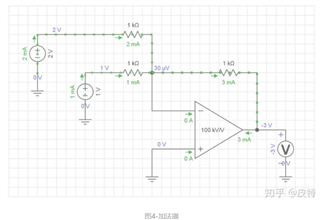Other Parts Discussed in Thread: LMH6702, OPA695, OPA855
Hello:
I want to design an adder with an amplifier to support more than five inputs.
Just refer to the example as below.
Besides, the frequency of the inputs is almost 200Mhz.
Would you please suggest me an amplifier and a referrence schematic?
Thanks a lot.




